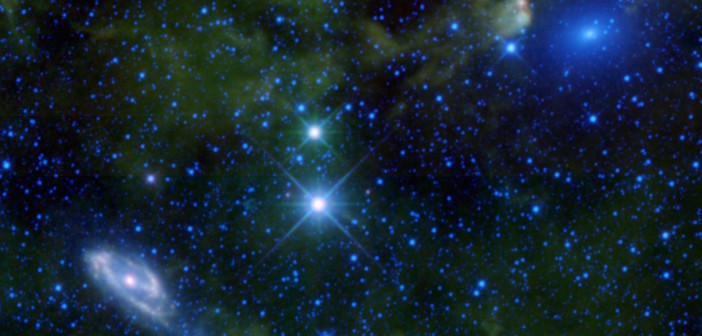Habitable zones are a hot topic in exoplanet studies: where, around a given star, could a planet exist that supports life? But if you scale this up, you get a much less common question: which type of galaxy is most likely to host complex life in the universe? A team of researchers from the UK believes it has the answer.
Criteria for Habitability
Led by Pratika Dayal of the University of Durham, the authors of this study set out to estimate the habitability of a large population of galaxies. The first step in this process is to determine what elements contribute to a galaxy’s habitability. The authors note three primary factors:
- Total number of stars
More stars means more planets! - Metallicity of the stars
Planets are more likely to form in stellar vicinities with higher metallicities, since planet formation requires elements heavier than iron. - Likelihood of Type II supernovae nearby
Planets that are located out of range of supernovae have a higher probability of being habitable, since a major dose of cosmic radiation is likely to cause mass extinctions or delay evolution of complex life. Galaxies’ supernova rates can be estimated from their star formation rates (the two are connected via the initial mass function).
Hospitable Cosmic Giants

Lower panel: the number of Earth-like habitable planets (given by the color bar, which shows the log ratio relative to the Milky Way) increases in galaxies with larger stellar mass and lower star formation rates. Upper panel: the larger stellar-mass galaxies tend to be elliptical (blue line) rather than spiral (red line). Click for larger view. [Dayal et al. 2015]
Based on these predictions, the authors find that the galaxies likely to host the largest number of habitable planets are those that have a mass greater than twice that of the Milky Way and star formation rates less than a tenth of that of the Milky Way.
These galaxies tend to be giant elliptical galaxies, rather than compact spirals like our own galaxy. The authors calculate that the most hospitable galaxies can host up to 10,000 times as many Earth-like planets and 1,000,000 times as many gas-giants (which might have habitable moons) as the Milky Way!
Citation
Pratika Dayal et al. 2015 ApJ 810 L2 doi:10.1088/2041-8205/810/1/L2

